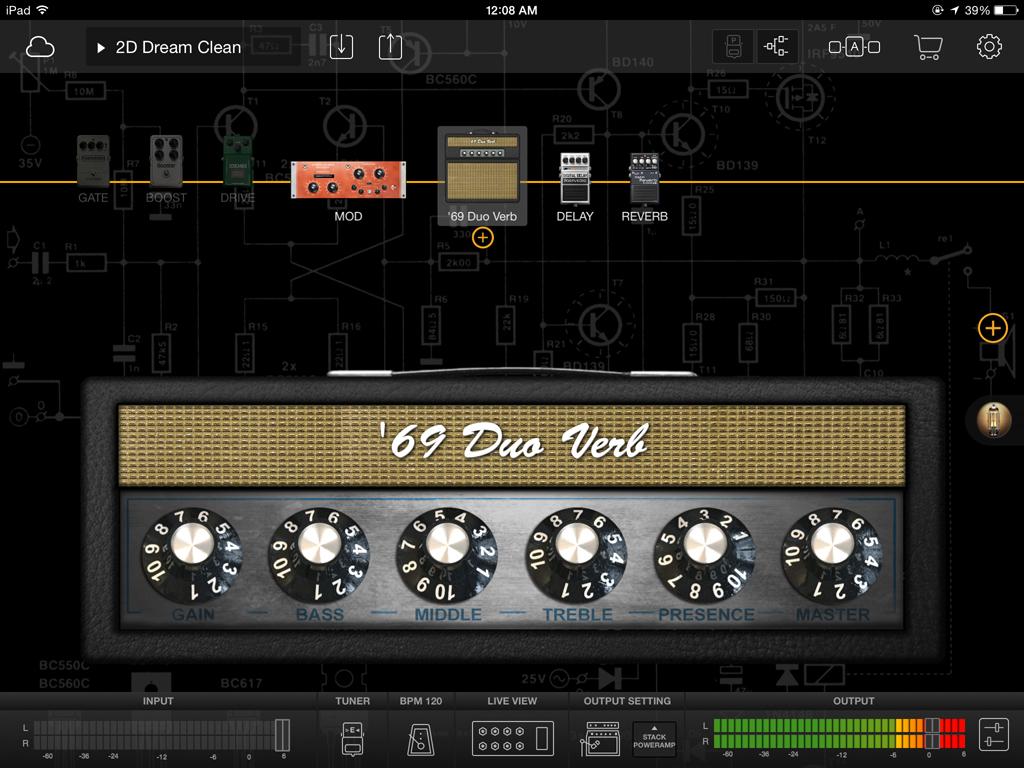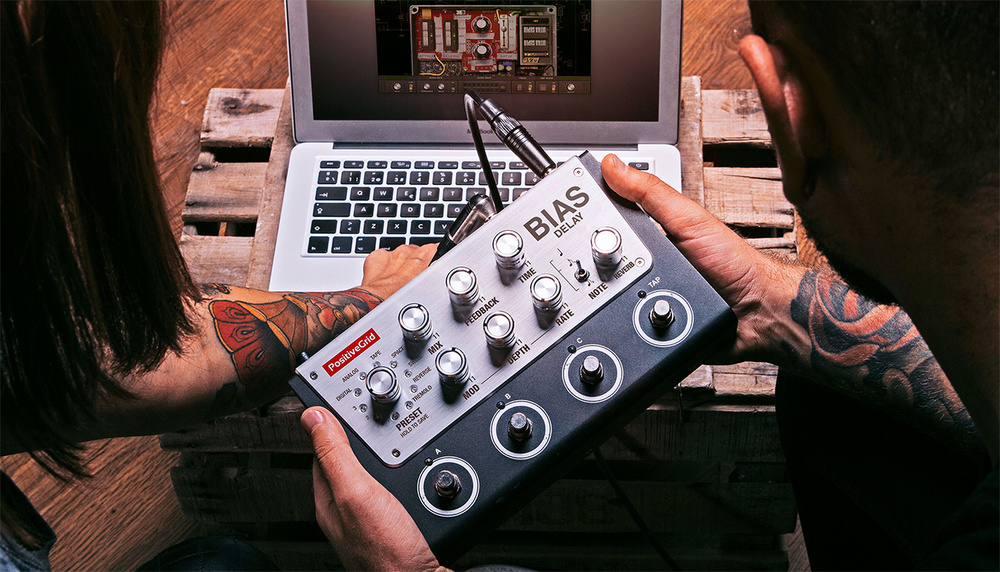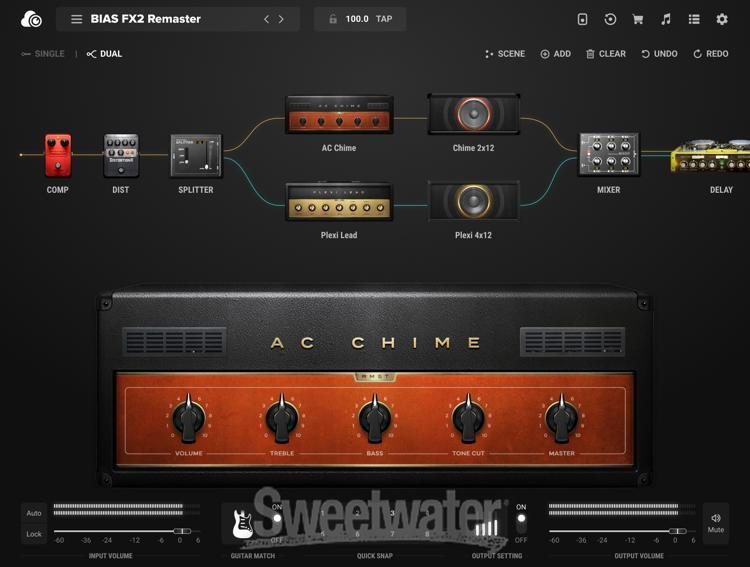

These utilities are largely self-explanatory, and all work well for their intended function. The bottom row of the primary panel has controllers for input and output levels, tuner, metronome, and output settings. This small panel contains the normal array of audio setup functions. The final button on the top row are the application settings. Most of this content appears to be celebrity endorsements, videos, and references to celebrity patches or presets that are available on the sharing cloud for the app (more on this later). The “Features” tab, however, is noteworthy in that it allows the app producers to provide curated content.

The latter two are relatively self-explanatory, allowing in-app purchases for additional individual effects, or in groups of effects called expansion packs. The panel has three tabs, “Features”, “Expansion Packs” and “Expansion Effects”. The shopping cart icon opens an interesting panel within the app. The next icon allows interaction with other audio apps installed on the iPad. This singular capability opens up whole new worlds of options for tone shaping.
#BIAS AMP PRO REVIEW STANDALONE PLUS#
This image shows the result of clicking the plus sign to split the signal chain, then selecting a separate amp model for one channel. When the icon is tapped, the signal will be split into left and right channels, allowing for channel-level customization. Tapping the plus sign invokes one of the differentiating pieces of functionality for this app: dual signal chains. The “Dream Clean” preset includes an amp component (the ‘69 Duo Verb’ component). Note that this particular component has a plus sign icon under it on the signal chain. All components can be turned on and off (like real devices) while still remaining in the signal chain. Tap toggles once to toggle them on, again to toggle back off. To adjust the pots on the individual components, tap the pot and drag upward to rotate clockwise, downward to rotate counter-clockwise. This is true of many of the included components – it was a somewhat nostalgic experience to cycle through all the included effects, trying to remember the brand and name of the stomps, flashing back to my college days when I could only moon over these devices in the music store. The image above shows an example distortion simulation from the Drive category that most guitarists have seen before.

Without naming brands, many of the stomps and racks are simulations of classic devices that will be recognizable to guitarists. Each effect category has multiple components within that category. Click the plus button to the right of the screen to add a new component to the chain.Ĭomponents are grouped by effect type (gate, compression, boost, drive, equalization, modulation, delay and reverb). Double-click any component in the chain to replace with a similar category component. Drop the component on the trash icon to remove it from the signal chain. Select the component and drag it off the chain – a trash can icon will appear at the left of the screen. Select the component and drag it left or right to rearrange the components in the signal chain. Tap a component to select it, then use the component editor at the bottom of the screen to edit the parameters. Selecting a preset is as simple as tapping the drop-down in the upper-left corner of the app.Ĭomponents in the signal chain can be rearranged and edited via simple UI gestures. As with most such systems, the names are a general indicator of sound, but the only way to really get familiar with the possibilities is to plug in and play. The app is delivered with 32 presets, ranging from “Dream Clean” to “80’s Metal” to “60’s Psych”. Amps, stomps, and racks are modeled in the UI as individual components, with adjusting controls that simulate real devices – amps have potentiometers, toggles, and buttons. The app uses a skeuomorphic UI metaphor that is instantly recognizable and fundamentally intuitive to guitarists.

In the example picture, the amplifier sim has been selected. Individual components in the chain can be selected by tapping on them. The currently-defined signal chain is displayed as a left-to-right linear layout of components at the top of the screen. After a brief look at the stylish splash screen, the primary working interface was shown above.įinding my way around the app: This app packs a LOT of functionality into an extremely intuitive user-interface. Listening to guitars through headphones has always struck me as somehow wrong, but condo dwellers can’t be picky.Īfter plugging in the guitar and headphones, I launched the BiasFX app. Sounds were evaluated using Bose headphones to eliminate ambient distractions. Evaluation Setup: I used my Squier USB guitar to plug directly into the iPad, eliminating any analog to digital conversion mechanism from the signal chain.


 0 kommentar(er)
0 kommentar(er)
